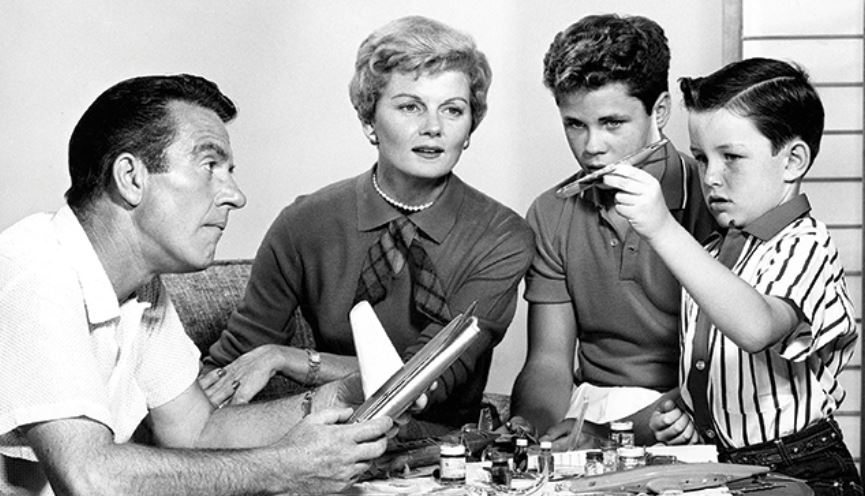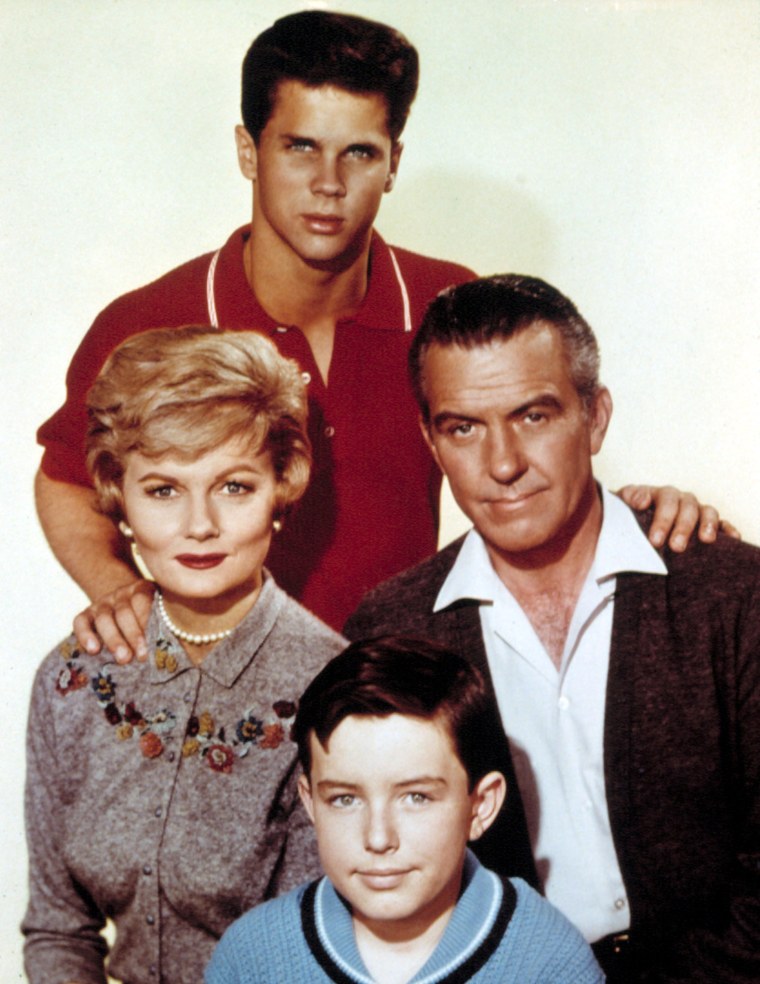In the golden age of American television, few shows captured the essence of family life as profoundly as Leave It to Beaver. Premiering in 1957, the sitcom became a defining portrayal of American suburban life and family dynamics, running until 1963. More than just a source of entertainment, Leave It to Beaver was a cultural touchstone for generations, offering comforting stories, moral lessons, and a heartfelt look at growing up.
While the show concluded over six decades ago, its impact on television and its message about family values remains as relevant today as ever. This article examines the timeless themes and universal lessons embedded in Leave It to Beaver, exploring how the show continues to resonate with audiences, both nostalgic and new, and its influence on future family-oriented television.
A Realistic Portrayal of Childhood
One of the most significant aspects of Leave It to Beaver was its honest depiction of childhood. Unlike many TV shows of its era, which often idealized the experiences of children, Leave It to Beaver embraced the complexities of growing up. The character of Theodore “Beaver” Cleaver, played by Jerry Mathers, was often thrust into moral dilemmas that were relatable to children and parents alike.
Beaver’s challenges—whether it was struggling with school, telling a small lie, or dealing with misunderstandings with friends—served as a way to depict the innocence of youth while also emphasizing the importance of learning from mistakes. These everyday problems and the lessons that followed provided comfort and relatability, making the show feel authentic and accessible to audiences of all ages.
Source: Vulture – The Realism of Leave It to Beaver
The Heart of the Cleaver Household
At the core of Leave It to Beaver was the Cleaver family, who set the standard for American fictional families on television. The show’s central characters—Ward Cleaver (Hugh Beaumont), June Cleaver (Barbara Billingsley), Wally Cleaver (Tony Dow), and Beaver Cleaver—were portrayed as loving, well-intentioned, and supportive individuals.
June Cleaver, the quintessential 1950s mother, was known for her immaculate house, pearls, and practical wisdom. However, her role transcended the stereotypical 1950s mother. June was empathetic, offering not only nurturing care but also a sharp intuition that helped guide her children through difficult situations.
Ward Cleaver, a calm, principled father, often acted as a moral compass for the family. His conversations with Beaver and Wally emphasized values such as responsibility, honesty, and compassion. In a time when gender roles were clearly defined, the Cleaver household provided a model of shared parenting, where both parents played active roles in their children’s moral and emotional upbringing.
Source: American Historical Association – TV Families in the 1950s
The Role of Wally and Beaver: Sibling Dynamics
The dynamic between Wally and Beaver Cleaver played a significant role in the show’s success. Wally, as the older sibling, served as a mentor and protector for his younger brother. The relationship between the two was characterized by playful teasing but also mutual respect and affection. Wally often found himself in the role of a gentle guide, helping Beaver navigate life’s many challenges.
Their sibling bond provided an authentic and relatable look at family life, where love and loyalty were balanced with moments of conflict and growth. The relationship between Wally and Beaver continues to resonate with viewers, serving as a reminder of the importance of brotherly support and understanding in the face of adversity.
Source: The Imaginative Conservative – Family Values in Leave It to Beaver
Timeless Themes and Universal Lessons
Although Leave It to Beaver aired in the late 1950s and early 1960s, its themes remain universal and timeless. The show explored essential topics such as:
- Navigating childhood and adolescence: Through Beaver’s adventures and misadventures, viewers saw the challenges of growing up, from schoolwork to peer relationships.
- The importance of honesty and integrity: Each episode featured valuable lessons on truthfulness, responsibility, and accountability.
- Learning from mistakes: Many of the show’s plots involved Beaver or Wally making mistakes and learning important life lessons from them.
- Understanding others’ perspectives: The show often emphasized empathy, highlighting the value of understanding different viewpoints within the family and society.
- Maintaining strong family bonds: The Cleavers epitomized the power of love, mutual respect, and shared responsibilities within a family.
These lessons continue to resonate today, offering guidance for families navigating the complexities of modern life. The show’s ability to balance humor and heart without being preachy contributed to its long-lasting appeal.
Source: The Imaginative Conservative – The Moral Imagination of “Leave It to Beaver”
Cultural Impact and Enduring Popularity
Over the years, Leave It to Beaver has become a cultural icon, often cited as one of the most influential family sitcoms in television history. The show’s formula—mixing light comedy with real-world family challenges—influenced many subsequent television programs, including The Brady Bunch, Full House, and even Modern Family.
The appeal of Leave It to Beaver lies in its wholesome storytelling and family-friendly content. The show’s simplicity and charm made it a beloved program, one that continues to attract new audiences through syndication and streaming platforms. Whether viewers are revisiting the show out of nostalgia or discovering it for the first time, its universal themes and relatable characters continue to make it a timeless classic.
Source: Hollywood Reporter – Leave It to Beaver’s Cultural Impact
Reunion Specials and Spin-Offs
The lasting legacy of Leave It to Beaver was reinforced through several reunion specials and spin-offs, which allowed fans to reconnect with the Cleaver family long after the series ended. These include:
- Still the Beaver (1983): A TV reunion movie that revisited the characters as adults, showing the Cleavers’ lives years after the original series.
- The New Leave It to Beaver (1984–1989): A sequel series that followed Beaver as a single father raising his own children.
- Books and documentaries: Various publications and films have explored the show’s production, cultural impact, and the lives of its cast members.
These follow-up projects have kept the show’s legacy alive, appealing to both older fans and newer generations discovering the Cleavers for the first time.
Source: TV Guide – Leave It to Beaver Spin-offs
A Comforting Reminder of Simpler Times
In a world dominated by fast-paced, high-stakes television programming, Leave It to Beaver remains a comforting reminder of simpler times. Its black-and-white visuals, clean storytelling, and wholesome messages offer a sense of calm and continuity. While the show captures a particular moment in American history, its focus on family and values transcends time.
Today, the show provides a valuable lesson about the importance of listening, learning, and growing together as a family—something that remains just as vital in today’s fast-paced world as it was when the show first aired.
Source: The Guardian – Leave It to Beaver: A Look Back
Final Thoughts: The Enduring Power of Family Television
The enduring legacy of Leave It to Beaver lies not only in its ratings or awards but in the way it touched everyday lives. It reminded parents to be patient teachers, encouraged children to be responsible and curious, and demonstrated that every mistake is an opportunity to learn and grow.
At its core, Leave It to Beaver is a show about family—not perfect, but loving, supportive, and ever-evolving. As long as families continue to gather together, ask questions, and learn from each other, Leave It to Beaver will remain more than just a classic—it will continue to be a guide for generations to come.
Verified Sources:
- The Imaginative Conservative – Leave It to Beaver
- American Historical Association – TV Families of the 1950s
- Vulture – The Realism of Leave It to Beaver
- Hollywood Reporter – Leave It to Beaver’s Impact






